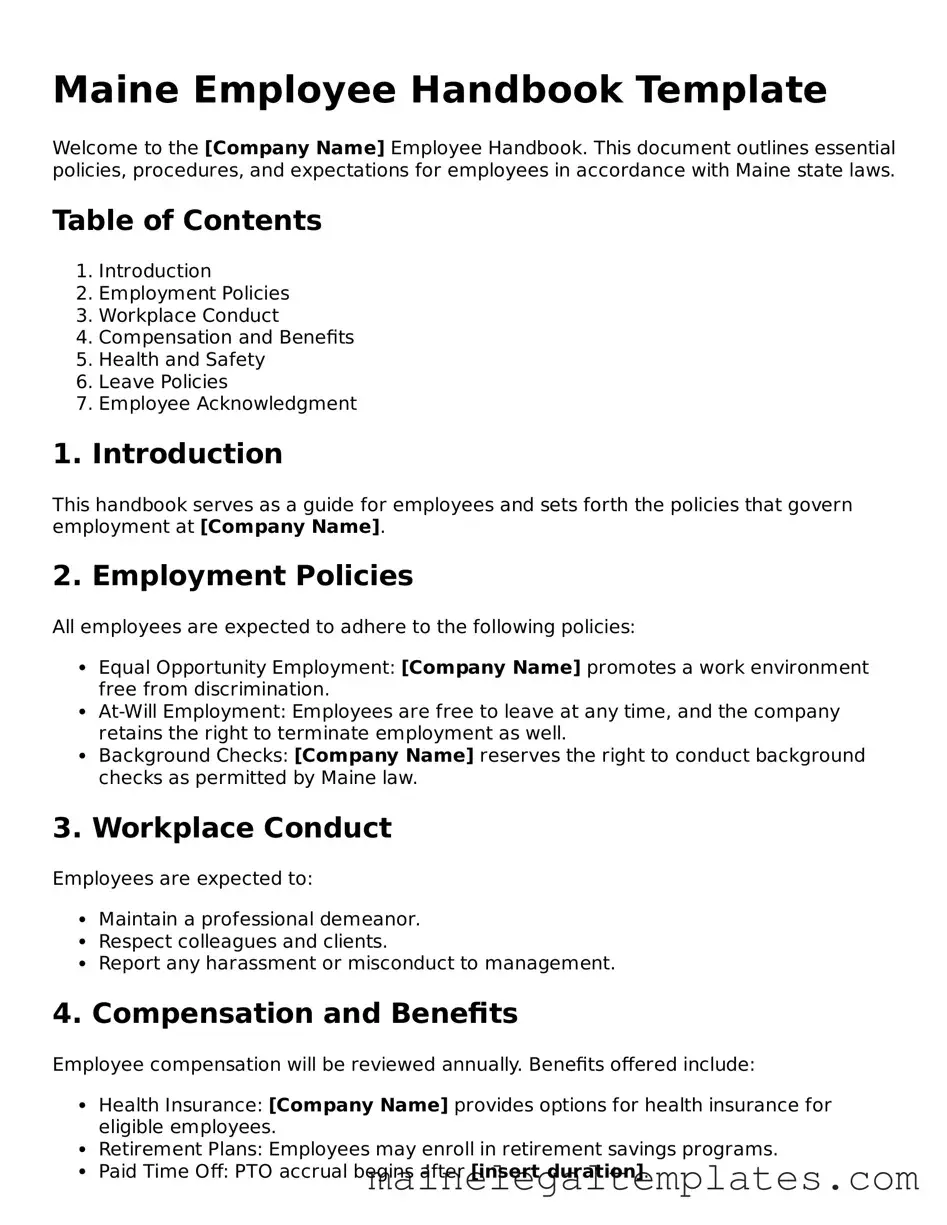Maine Employee Handbook Template
Welcome to the [Company Name] Employee Handbook. This document outlines essential policies, procedures, and expectations for employees in accordance with Maine state laws.
Table of Contents
- Introduction
- Employment Policies
- Workplace Conduct
- Compensation and Benefits
- Health and Safety
- Leave Policies
- Employee Acknowledgment
1. Introduction
This handbook serves as a guide for employees and sets forth the policies that govern employment at [Company Name].
2. Employment Policies
All employees are expected to adhere to the following policies:
- Equal Opportunity Employment: [Company Name] promotes a work environment free from discrimination.
- At-Will Employment: Employees are free to leave at any time, and the company retains the right to terminate employment as well.
- Background Checks: [Company Name] reserves the right to conduct background checks as permitted by Maine law.
3. Workplace Conduct
Employees are expected to:
- Maintain a professional demeanor.
- Respect colleagues and clients.
- Report any harassment or misconduct to management.
4. Compensation and Benefits
Employee compensation will be reviewed annually. Benefits offered include:
- Health Insurance: [Company Name] provides options for health insurance for eligible employees.
- Retirement Plans: Employees may enroll in retirement savings programs.
- Paid Time Off: PTO accrual begins after [insert duration].
5. Health and Safety
[Company Name] is committed to providing a safe working environment. Employees are encouraged to:
- Report unsafe conditions.
- Participate in safety training.
- Use safety equipment as required.
6. Leave Policies
The following leave options are available to eligible employees:
- Sick Leave: Employees accrue sick leave in accordance with Maine law.
- Family Medical Leave: Eligible employees may take leave under the Family and Medical Leave Act.
- Holidays: [Company Name] observes the following holidays: [list holidays].
7. Employee Acknowledgment
All employees must sign an acknowledgment that they have received and understood this handbook. Please provide the following information:
Name: [Employee Name]
Signature: [Employee Signature]
Date: [Date]
